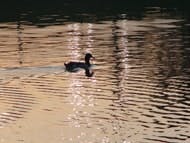The U.S. EPA announced a new rule addressing how and where contaminated sediment will be cleaned up in the Great Lakes. Acting under the authority of the Great Lakes Legacy Act, the agency has outlined how projects will be identified, selected and evaluated to clean up the sediment and reverse the environmental harm to Great Lakes rivers and harbors.
“The Great Lakes Legacy Rule is our roadmap for selecting the best, priority cleanup projects and leveraging public and private dollars to accelerate environmental progress,” said EPA Assistant Administrator for Water Benjamin H. Grumbles.
The cleanup of such “areas of concern” has been a priority of the Great Lakes Regional Collaboration. The result will be healthier aquatic habitat and cleaner water for fish, wildlife and the 35 million residents of the Great Lakes region. Proposed funding for this effort has quintupled in four years. Congress appropriated $9.9 million in fiscal year 2004, $22.3 million in 2005 and $29.6 million in 2006 for Legacy Act cleanups. The president has requested $49.6 million in the proposed 2007 budget.
Additional funding comes from state and local partners, who contribute at least a 35% match for each project. A request for projects will be issued within 90 days after the rule is published in the Federal Register. Proposals may be submitted at any time.
Contaminated sediment is a significant problem in the Great Lakes basin. The U.S. and Canada have designated 41 areas of concern. In recent years, state and federal agencies have worked with local communities to clean up sediment through dredging and disposal, capping the contaminated material with clean material, allowing natural recovery of the materials in place, or a combination. From 1997 to 2004, approximately 3.7 million cu yards of contaminated sediment were remediated from the Great Lakes Basin.
Projects that have received funding under the program include the Ashtabula River in northeast Ohio; the Black Lagoon in the Detroit River; Ruddiman Creek in Muskegon, Mich.; and Hog Island, near Superior, Wis.
Source: EPA


